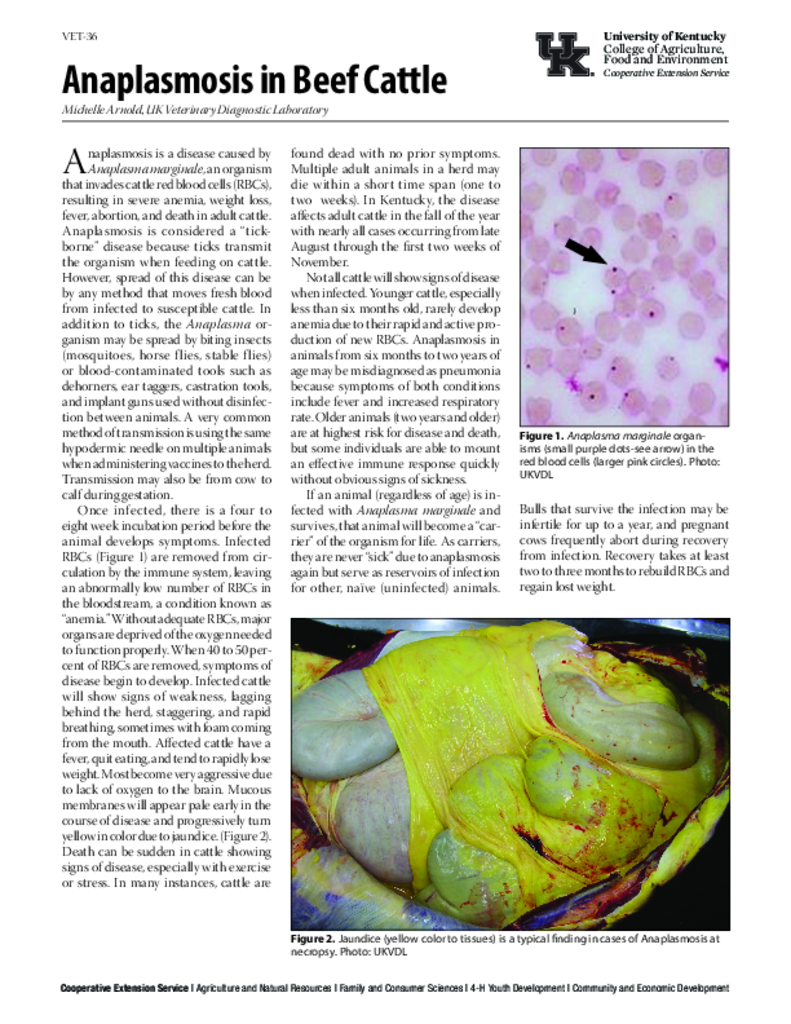Anaplasmosis in Beef Cattle
VET-36
Anaplasmosis in Beef Cattle
Anaplasmosis in Beef Cattle
Authored by: Michelle Arnold
Abstract
Anaplasmosis is a disease caused by Anaplasma marginale, an organism that invades cattle red blood cells (RBCs), resulting in severe anemia, weight loss, fever, abortion and death in adult cattle. Anaplasmosis is considered a "tick-borne" disease because ticks transmit the organism when feeding on cattle. However, spread of this disease can be by any method that moves fresh blood from infected to susceptible cattle. In addition to ticks, the Anaplasma organism may be spread by biting insects (mosquitoes, horse flies, stable flies) or using blood-contaminated tools such as dehorners, ear taggers, castration tools, and implant guns without disinfection between animals. A very common method of transmission is using the same hypodermic needle on multiple animals when administering vaccines to the herd. Transmission may also be from cow to calf during gestation.
Core Details
Categorical Details
Language
English
Peer Reviewed?
Yes

